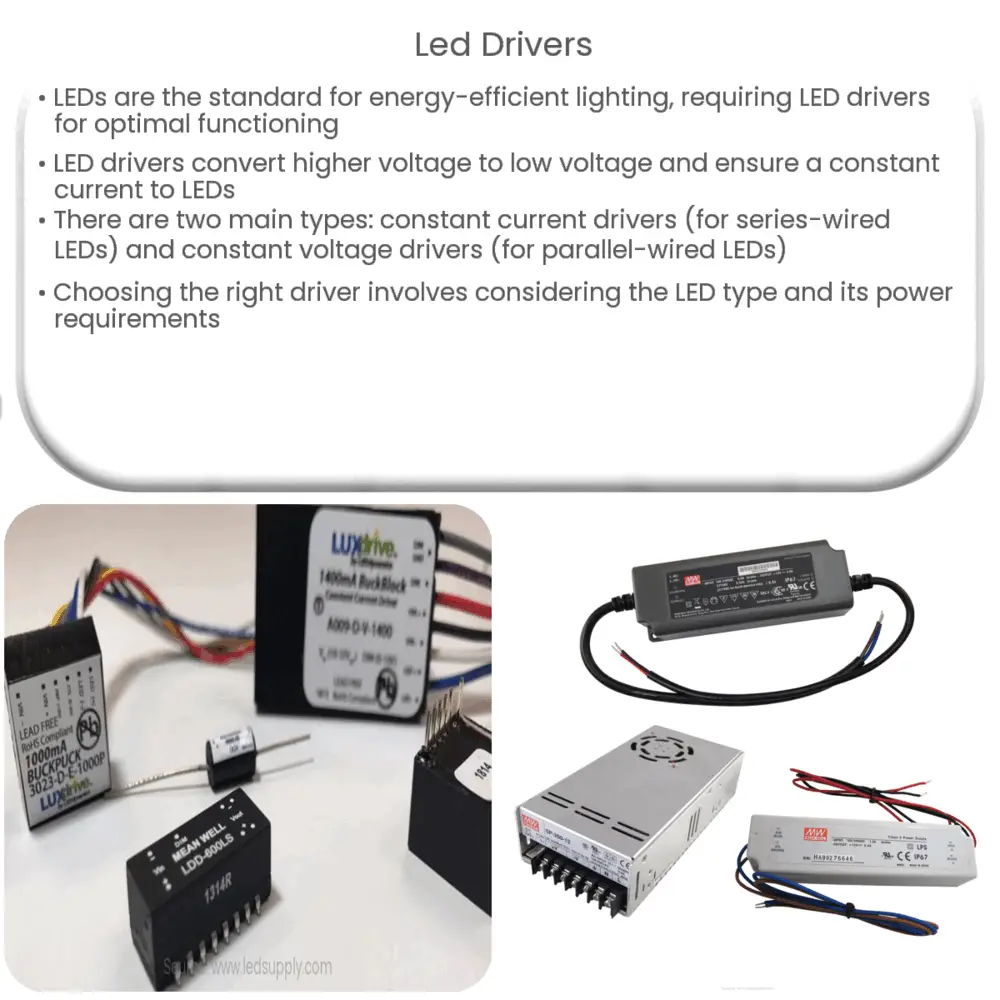Explore the crucial role of LED drivers in LED lighting systems, their types, how to choose the right one, and their impact on the lifespan of LEDs.

Understanding LED Drivers
LEDs, or Light Emitting Diodes, have become the standard for energy-efficient lighting solutions. However, to function optimally, they require a device known as an LED driver. An LED driver serves a critical role in regulating the power supplied to an LED or an array of LEDs, ensuring they perform efficiently and effectively over their lifespan.
Function of LED Drivers
LED drivers are an essential component of any LED system. They work similarly to a ballast for fluorescent lamps. LEDs are designed to run on low voltage (usually 12 or 24 volts) direct current, but they’re often used in environments that supply higher voltage alternating current. This is where the LED driver comes into play, converting higher voltage, alternating current to low voltage, direct current.
Furthermore, LEDs require a constant current to operate optimally. Without an LED driver, the current supplied to the LED may fluctuate, which can result in flickering lights or premature LED failure.
Different Types of LED Drivers
There are two primary types of LED drivers: constant current drivers and constant voltage drivers.
- Constant Current Drivers: These LED drivers maintain a constant current and vary the voltage depending on the load of the LED. They’re typically used when LEDs are connected in series.
- Constant Voltage Drivers: These LED drivers supply a constant voltage and allow the current to vary based on the load. They’re generally used when LEDs are wired in parallel.
Choosing the Right LED Driver
To choose the right LED driver, you need to consider several factors. The most important factors include:
- The type of LED: Determine whether your LED requires a constant current or constant voltage driver.
- Power requirements of the LED: You need to match the power output (in watts) of the driver to the power requirement of the LED or LED strip.
- Input voltage: Ensure that the driver can accept the voltage supplied by your power source.
Other Considerations When Selecting an LED Driver
Beyond the basic specifications, there are other considerations to keep in mind when selecting an LED driver.
- Dimming Capability: If you want your LEDs to be dimmable, you need to ensure your LED driver supports this feature.
- Physical Size: The size of the LED driver is an essential factor, especially for installations with limited space.
- Environmental Conditions: Depending on the location of the installation, the LED driver may need to be resistant to water, dust, or other environmental factors.
- Regulatory Compliance: Ensure the driver complies with all necessary safety and electrical standards.
Importance of Quality
Lastly, it’s crucial to note the importance of quality when choosing an LED driver. A low-quality driver can reduce the lifespan of your LED and negatively affect its performance. High-quality LED drivers offer better power efficiency, improved safety features, and longer lifespans, making them a smart investment in the long run.
Conclusion
In conclusion, LED drivers play a vital role in the functionality and longevity of LEDs. They ensure that LEDs receive the right amount of power, maintain steady operation, and offer optional features such as dimming. Understanding the different types of LED drivers—constant current and constant voltage—and their applications is key to selecting the right driver for your LED setup. Furthermore, considering factors such as power requirements, input voltage, dimming capability, size, environmental conditions, and regulatory compliance will help you choose an LED driver that best suits your needs. Remember, investing in a high-quality LED driver is not just about immediate performance—it’s about ensuring the long-term reliability and efficiency of your LED lighting system.

